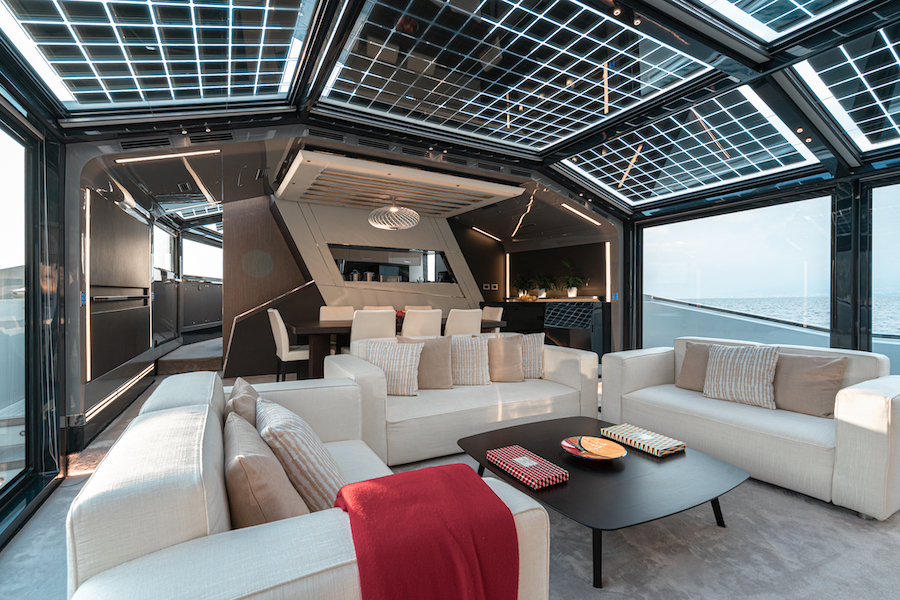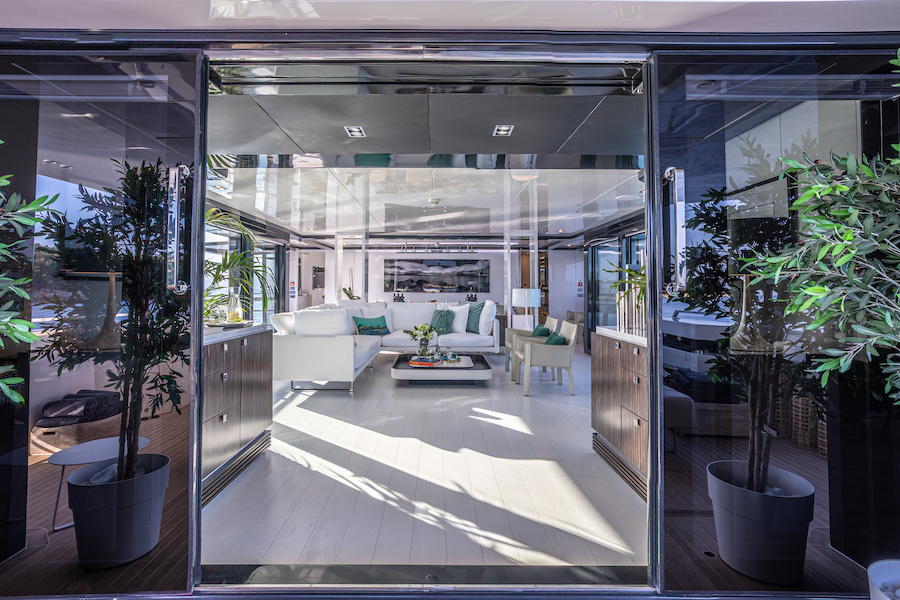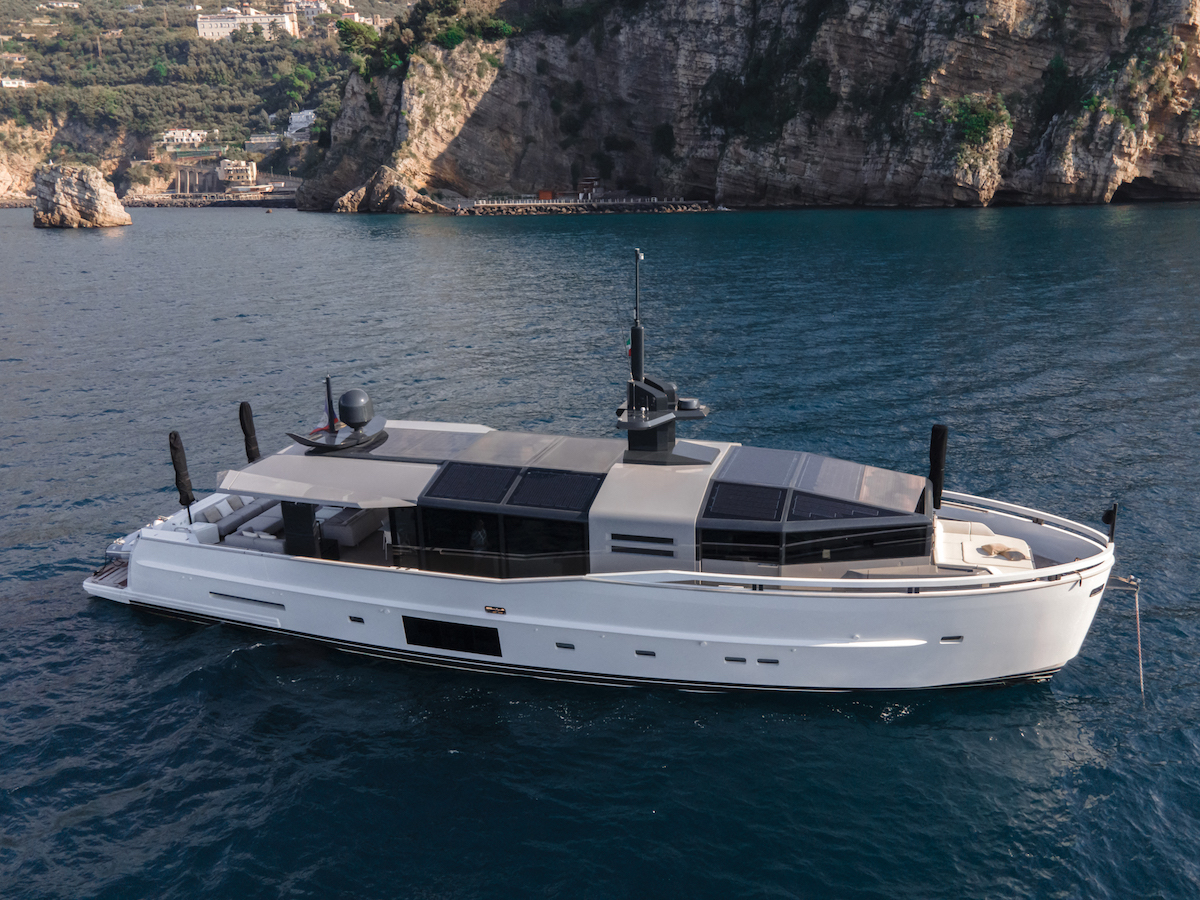As the superyacht industry navigates its way toward a sustainable future, the experts at Northrop and Johnson explain how the company is leading the way with its Responsible Yachting Strategy.
There is no escaping the fact that a superyacht can have a detrimental effect on the ocean, yet the ocean is the yachting industry’s biggest ally – both for its livelihood and in mitigating climate change. In a realm that has traditionally been somewhat detached from sustainability, the superyacht industry has typically been driven by luxury and exclusivity.
But with this comes a cost. Whether it is the fossil fuels burned while underway or the fuel that powers the generators, the maintenance or even the provisioning, a great deal goes into the superyacht experience, all of which has a negative environmental impact. However, with so much focus on the environment and the world’s oceans, it is now increasingly rare to find any player in the industry that is not combating the issue of sustainability. From the yacht’s build and design to the brokerage houses, the supertanker of yachting is increasingly turning in the direction of eco-responsibility.
The pace for change for more eco-responsible yachting is increasing considerably with every new yacht built, with clients more concerned than ever to leave the ocean clean for their children and grandchildren to enjoy. Optimising propulsion, engines and hull design, and continuous advances in technology, are potentially the most important developments happening in the yachting industry.
Short term, building yachts with more efficient hull designs is something that the majority of shipyards are doing. Working on a yacht’s hull optimisation will ensure that a hull is more fuel efficient and therefore also overall energy efficient. A slender displacement type hull or multihull yacht, for example, will have less resistance while cruising and therefore less propulsion required and therefore less fuel.

Solar power, wind power, hybrid propulsion systems and hydrogen fuel cell technology have also become a primary focus for many shipyards looking for alternatives to using traditional internal combustion engines for power generation.
Of course, not all these innovations are entirely new. Wind-powered yachts have been around for centuries, but wind power combined with new technologies has huge potential for the future of sailing yachts in particular, while hydrogeneration has also become more commonplace. Hybrid yacht propulsion, too, is probably the most exciting innovation in the yachting world. Although hybrid power generation has been around for a while, only relatively recently has it been used in the superyacht industry, most commonly in the form of diesel electric.
Aside from burning a lot of fossil fuel for cruising, even when static, the fuel burned by the electricity generators, provisioning, maintenance and indeed almost everything else that goes into the superyacht experience, all still have a negative environmental impact.
The last few years have seen huge advances in technological and engineering features for efficiency-enhancing solutions in this area. From occupancy-based lighting, air-conditioning sensors and heat recovery systems to LED lighting, state-of-the-art thermal insulation and HVAC systems, there are numerous ways in which energy can be conserved. Battery banks with “peak-shaving” capabilities, which avoid extra generators starting up when demand for hotel services are high, can also help lower fuel use. Added to this, wastewater treatment systems and catalytic convertors can also play their part in less pollution.

Longer term, the industry needs to replace fossil fuels entirely and consider alternative power sources as they develop. To accommodate such future propulsion solutions, designers are future proofing new yachts for whatever energy supply will come into play – whether this is in the form of LNG (liquid natural gas), gas or hydrogen, the race for energy-efficient propulsion has sped up considerably in the past few years.
As superyacht owners and charterers become more and more conscious of the environment and their personal contribution to ocean conservation, they also require the companies that they work with to align with their values. One yachting company paving the way forward is Northrop and Johnson. The brokerage house is on an evolving journey towards becoming a more Responsible Yachting business in every way.
Over the past few years, they have taken the time to understand what is important to both clients and their people, using this insight to create their own Responsible Yachting Strategy. Dedicated to having a positive social and environmental impact, their strategy is guided by the United Nations Sustainability charter, specifically focussing on UN Sustainability Goal #14. Comprising of three pillars: the environment, the yachting community, and the people within the business, the approach is based on incremental changes and improvements. Focus areas include reducing emissions, working with partners across the supply chain, and identifying and championing a more sustainable corporate structure while informing and inspiring clients.
This article was written by Northrop and Johnson, a sponsor partner of Monaco Life.
